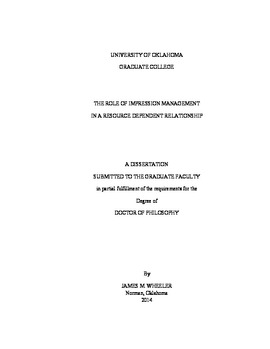| dc.description.abstract | Venture capitalists (VCs) perform valuable services to entrepreneurs and to the economy as a whole by accelerating innovation through the funding of high potential, nascent ventures. The operational duties of a VC are many, but they have two overriding and important functions—making sound investments in great companies and securing Limited Partners who fund VC portfolio companies. Research to date has focused primarily on operational issues such as governance, vetting of opportunities and VC added value to nascent ventures. However, very little research has investigated the behaviors of VCs. Of particular interest to the author is the impression management behavior of VCs. A better understanding of VC behaviors and motivations will establish a framework that can then be linked to performance. Once performance and behaviors are linked, best practices can be conceptualized. Linking organizational impression management (OIM) to positive firm performance would contribute theoretically to the resource base of the firm (Barney, 1991) as OIM could then be considered a resource used to achieve a sustainable competitive advantage.
The competition for deals and Limited Partners (LPs) has become fierce. First, for limited partner funding, a recent paper by the Kauffman Foundation has splashed cold water on the viability of the VC investment class; in other words, it has significantly underperformed over the past decade. Second, the sourcing of potential VC investment opportunities has also become very competitive. The advent of “crowdsourcing”, “super angels”, expanded government grant programs for funding, and the advent of social media, for visibility, allow new ventures to seek alternative funding and/or build a “buzz” without the backing of top-tier VCs. The availability of these alternative funding options can have a negative effect on VCs. If a VC is shut out of the 10 or 12 a year billion-dollar companies that are created each year, they will not be able to deliver benchmark returns.
The following dissertation explores two research questions: 1) why do VCs engage in impression management in the first place and 2) what causes venture capitalists to change their impression management tactics? While on the surface these questions appear only to be relevant to the venture capital industry, this dissertation posits that the answers to these questions have broader and more generalizable implications. Specifically, do organizations use impression management strategies to manage resource dependence? If so, what tactics are used when? This dissertation, then, contributes to theory by expanding organizational impression research by examining the cross-level actions of organizational impression management strategies enacted by organizations to manage resource dependence. Additionally, this dissertation contributes to theory by expanding resource dependence theory (RDT) and its role in enacting organizational impression management (OIM) activities.
This dissertation argues that VCs use impression management to gain legitimacy with entrepreneurs and Limited Partners and other VCs. Then it discusses how firm and environmental factors influence impression management motivation and the construction of VC OIM strategies. This dissertation collected data from VCs to test the hypotheses. The proposed research model, based on mediation, did not yield support for the suggestion that: the relationship between resource dependence and legitimacy is mediated by OIM. Therefore a revised research model was developed to test whether possible moderated relationships between resource dependence (importance of entrepreneurs, VCs and LPs) and OIM strategies predicting legitimacy.
The revised research model testing moderation yielded four significant interactions. However, three of the four significant relationships were a negative. The importance of entrepreneurs (resource) moderated the relationship between signaling professional organization (OIM) and legitimacy and also moderated the relationship between image development (OIM) and legitimacy. But both relationships were negative. The importance of VCs (resource) positively moderated the relationship between organizational achievement (OIM) and legitimacy and also the relationship between the importance and personal credibility (OIM) and legitimacy. One relationship was positive and the other negative.
Specifically, VCs who place great importance on entrepreneurs and placed high importance on OIM tactics (signaling a professional organization and developing an image) were associated with less legitimacy. Similarly, VCs who placed great importance on the resource of other VCs produced one positive predictor of legitimacy (interacting with signaling organizational achievement) and one negative predictor of legitimacy (interacting with personal credibility).
The results of this research project were mixed and inconclusive. The relationship between OIM tactics and behaviors with resource dependence was negative in three out of four significant predictor relationships. For one set of variables, the relationship between resource dependence and OIM tactics predicted legitimacy positively. But, three additional significant interactions were negative. This dissertation looked to see if legitimacy was effective as a predictor of OIM strategies, rather than an outcome of OIM strategies. A post-hoc analysis yielded a negative relationship between increased legitimacy and OIM strategies.
Additionally, when reviewing many of the articles from the popular press quoted in this dissertation, it could be argued that VCs were engaging in OIM strategies because they lacked legitimacy due to poor performance. Therefore, the post-hoc analysis finding legitimacy, a resource, predicting OIM strategies is consistent with articles in the popular press. Overall, this dissertation suggests OIM strategies are utilized by organizations, at times to achieve legitimacy and at times the strategies are modified due to established legitimacy, but the results from this dissertation do not offer clarity on cause and effect. | en_US |
